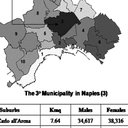Phenotypic features of carbohydrate sulfotransferase 3 (CHST3) deficiency in 24 patients: congenital dislocations and vertebral changes as principal diagnostic features.
Słowa kluczowe
Abstrakcyjny
We recently reported on the deficiency of carbohydrate sulfotransferase 3 (CHST3; chondroitin-6-sulfotransferase) in six subjects diagnosed with recessive Larsen syndrome or humero-spinal dysostosis [Hermanns et al. (2008); Am J Hum Genet 82:1368-1374]. Since then, we have identified 17 additional families with CHST3 mutations and we report here on a series of 24 patients in 23 families. The diagnostic hypothesis prior to molecular analysis had been: Larsen syndrome (15 families), humero-spinal dysostosis (four cases), chondrodysplasia with multiple dislocations (CDMD "Megarbane type"; two cases), Desbuquois syndrome (one case), and spondylo-epiphyseal dysplasia (one case). In spite of the different diagnostic labels, the clinical features in these patients were similar and included dislocation of the knees and/or hips at birth, clubfoot, elbow joint dysplasia with subluxation and limited extension, short stature, and progressive kyphosis developing in late childhood. The most useful radiographic clues were the changes of the lumbar vertebrae. Twenty-four different CHST3 mutations were identified; 16 patients had homozygous mutations. We conclude that CHST3 deficiency presents at birth with congenital dislocations of knees, hips, and elbows, and is often diagnosed initially as Larsen syndrome, humero-spinal dysostosis, or chondrodysplasia with dislocations. The incidence of CHST3 deficiency seems to be higher than assumed so far. The clinical and radiographic pattern (joint dislocations, vertebral changes, normal carpal age, lack of facial flattening, and recessive inheritance) is characteristic and distinguishes CHST3 deficiency from other disorders with congenital dislocations such as filamin B-associated dominant Larsen syndrome and Desbuquois syndrome.



